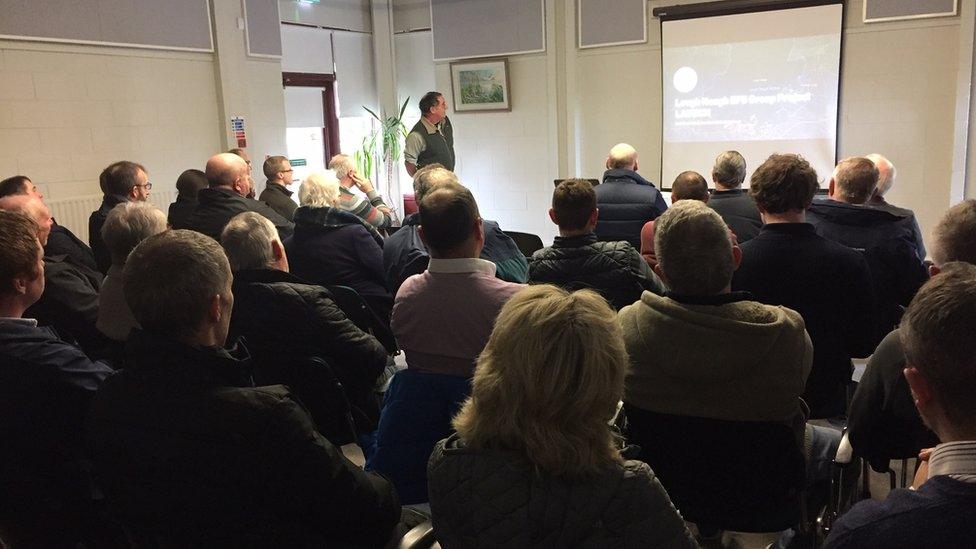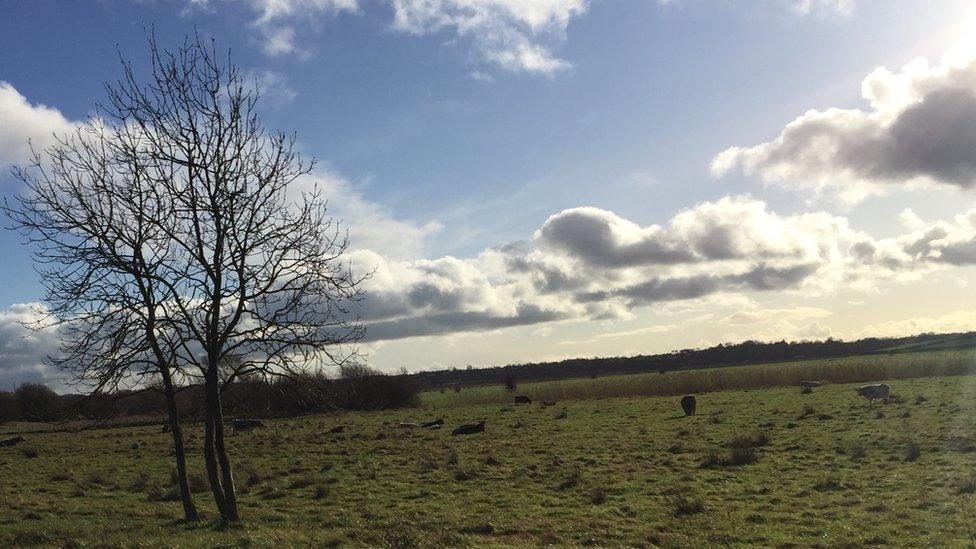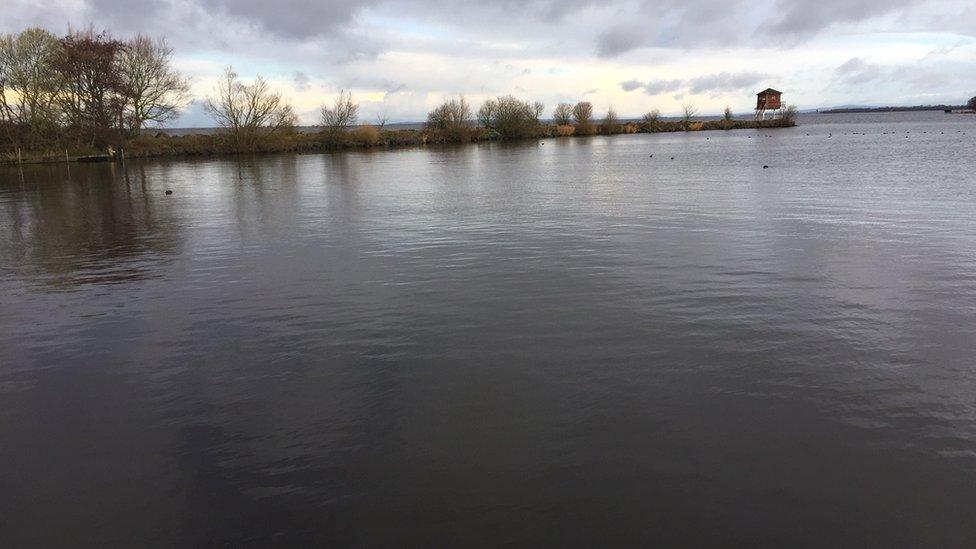Farmers paid to conserve curlew habitat
- Published

A network of land around the lough shore is being managed for nature
Fifty farmers have come together to manage a sizeable stretch of Lough Neagh's shore for the benefit of wildlife.
They have signed up to a conservation scheme that pays them hundreds of pounds per hectare for conservation work.
It is hoped it will lead to a reversal of the decline in numbers of breeding waders like snipe and curlew.
And the plan is to get even more landowners involved.

Farmers interested in the scheme attend the launch
The project is being run by the Lough Neagh Partnership and will bring £1.4m into the area over five years, with average payments to farmers of £700 per hectare.
The partnership's survey work showed a decline in bird numbers around the lough which its says has been driven by a loss of habitat and climate change.
Under the conservation scheme farmers will be paid to clear scrub, manage rush and fence off watercourses from livestock.
It's intended that work will improve water quality and habitat for ground nesting birds.

Work includes fencing off watercourses from livestock
There are particular concerns around the future of the native curlew population around the lough.
Lough Neagh Partnership spokesman Gerry Darby said there were real concerns that the species was at a "tipping point" and could disappear from the areas.
"We're talking about species extinction which is pretty horrible," he said.
Redshank, lapwing and snipe are other key species that need help.
One of those who has signed up is John Farr, he farms at Sandy Bay near Crumlin and has diversified into social farming - offering placements to people with learning disabilities and mental health issues.
He has fenced off a lot of watercourses around his 40-acre farm, and set aside areas of important habitat on his land.

Lough Neagh is home to a declining number of resident breeding waders
He has also changed his grazing regime and provided water drinkers to ensure his cattle don't use the lough as a source of drinking water.
"Really it has enhanced the whole farm as well as enhancing the habitat."
Farmers sign up for a five year commitment and payments come from the Rural Development Fund.
At the launch of the scheme on Tuesday, they were told that the "public money for public goods" model on which they had embarked was likely to form a considerable part of future farm support.